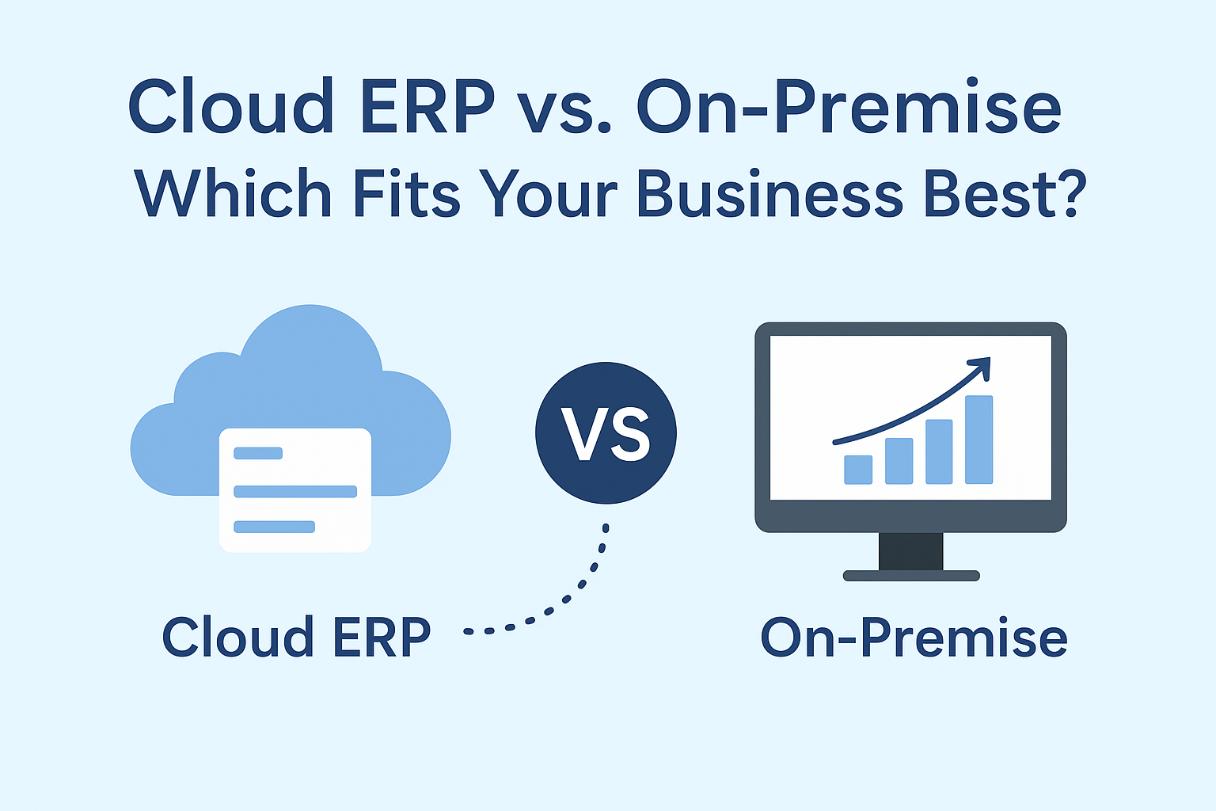Enterprise Resource Planning (ERP) systems are essential tools for streamlining business processes, integrating data, and improving efficiency. However, one of the biggest decisions companies face when adopting an ERP solution is whether to deploy it in the cloud or keep it on-premise. Each model offers distinct advantages and challenges, and the right choice depends on your organization’s size, resources, and growth objectives.
Understanding the Two Models
- Cloud ERP: Hosted on the vendor’s servers and accessed via the internet. It offers subscription-based pricing, automatic updates, and scalability.
- On-Premise ERP: Installed on your organization’s own servers and managed in-house. It gives you complete control over hardware, software, and data.
Advantages of Cloud ERP
- Lower Upfront Costs
Cloud solutions typically use subscription models, eliminating the need for heavy initial investments in infrastructure. - Scalability
As your business grows, you can easily add users, modules, or storage without replacing hardware. - Remote Accessibility
Employees can access the system from anywhere, making cloud ERP ideal for distributed teams and hybrid workplaces. - Automatic Updates
Vendors handle upgrades and maintenance, ensuring you always have the latest features and security patches.
Advantages of On-Premise ERP
- Full Control
You maintain complete ownership of your servers, data, and custom configurations. - Data Security Customization
Some organizations prefer keeping sensitive information within their own firewalls, particularly in highly regulated industries. - One-Time Licensing Costs
Although the upfront cost is higher, long-term expenses can be predictable if your IT infrastructure is stable.
Factors to Consider When Choosing
- Budget: Cloud ERP minimizes capital expenditure, while on-premise may require significant upfront investments.
- IT Resources: A strong internal IT team is essential for managing on-premise ERP systems, while cloud ERP reduces administrative overhead.
- Growth Plans: If your business is rapidly expanding, cloud ERP offers flexibility without major hardware upgrades.
- Compliance Requirements: Organizations with strict data residency or regulatory needs may find on-premise solutions more suitable.
Hybrid ERP: A Middle Ground
Some businesses adopt a hybrid approach, combining the scalability of cloud ERP with the control of on-premise systems. This model can be useful for organizations with unique compliance requirements or those transitioning to the cloud in stages.
Conclusion
Both cloud and on-premise ERP systems have strengths and trade-offs. The best choice depends on your organization’s goals, industry, and technical capacity. Evaluate your budget, growth trajectory, and security requirements before making a decision. By aligning your ERP deployment with your long-term strategy, you’ll ensure your system supports efficiency, innovation, and sustainable growth.



